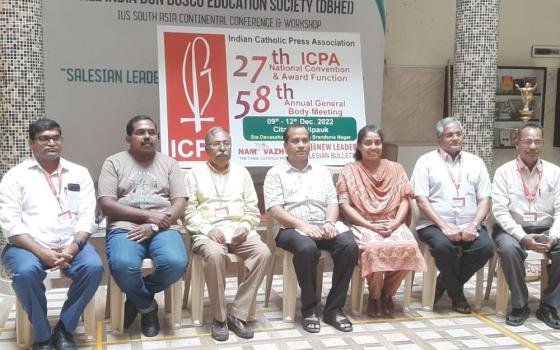CLIMATE REFUGEES
By Collectif Argos
Published by MIT Press, $29.95
This book argues that the legal definition of a refugee should be expanded to cover those severely affected by the environmental consequences of climate change.
Some estimates predict that as climate change continues, as many 200 million people will be displaced worldwide by the end of the century. Collectif Argos is a group of 10 France-based journalists, writers and photographers who have documented the effects of environmental change in photo and essay format.
The authors focus on nine sites around the world, including the United States, Bangladesh, Chad, Nepal and a small island in the Pacific Ocean, Tuvalu.
In each case the authors craft a narrative that examines the effect climate change has had on people living in these various regions. One of the most attractive aspects of the book is the pages of beautiful photography placed at the end of each chapter, complementing the preceding narrative.
Given the reality of global warming, this book is timely, as is rethinking the definition of “refugee.” Sixty years ago, responding to the widespread refugee crisis in Europe following World War II, the United Nations defined a refugee as someone who has fled from his or her country of residence and “has a well-founded fear of persecution because of his or her race, religion, nationality, membership of a particular social group of political opinion.”
Recognizing “climate refugees” as a legal category faces obstacles. The recent “Climategate” controversy raised hackles in some circles regarding the validity of human-induced climate change. If these objections were restricted to a handful of talking heads, there would be little reason for concern. Unfortunately, there is evidence that skepticism over the science of human-induced climate change has broad appeal. The results of a March Gallup poll revealed that only half of Americans agree to the proposition that climate change is caused by human activity, down from 61 percent just seven years earlier.
American Catholics are not exempt from this tendency. Although slightly dated, the results from a Pew Forum poll published in April 2009 showed that Catholics in the United States are wary of the issue, with only 44 percent of those polled in agreement with the claim that we are experiencing human-induced global warming.
 While many Catholics may be skeptical, my work at the U.S. bishops’ conference demonstrates that the bishops take this issue seriously. This is particularly apparent through their establishment of the Catholic Coalition on Climate Change (www.catholicsandclimatechange.org). This coalition, comprised of approximately a dozen national Catholic organizations, recognizes the devastating effect of climate change, particularly on the world’s poor, and the likelihood of displacement that will come with it. Through this coalition the bishops seek to educate the Catholic public and convince them of the peril of human-induced climate change.
While many Catholics may be skeptical, my work at the U.S. bishops’ conference demonstrates that the bishops take this issue seriously. This is particularly apparent through their establishment of the Catholic Coalition on Climate Change (www.catholicsandclimatechange.org). This coalition, comprised of approximately a dozen national Catholic organizations, recognizes the devastating effect of climate change, particularly on the world’s poor, and the likelihood of displacement that will come with it. Through this coalition the bishops seek to educate the Catholic public and convince them of the peril of human-induced climate change.
Climate Refugees could provide a useful resource to achieve this objective. One of the strengths of this book is in its ability to demonstrate the effect that climate change has on the poorest among us, by focusing on how it affects the lives of the people who are living in the areas under discussion. How are their customs, their economies and their ways of life altered as a result of their changing environment?
Reading stories of people suffering, with photos of their faces, families and friends, moves the debate over climate change from the realm of the theoretical and the abstract to that of the concrete and the everyday. It forces readers to look at the issue through a different lens and challenges them to reevaluate their preconceptions regarding the dangers associated with climate change.
While Climate Refugees is well worth reading, it has its weaknesses. With different authors responsible for writing different case studies, the quality of the narratives varies. Some are free-flowing and engaging, others more choppy and disjointed.
The personalized, narrative-driven approach that this book takes is particularly engaging, but it carries with it risks. Although the authors highlight scientific data at key points, their primary emphasis is on telling the stories of people affected by environmental disasters that the authors assert are largely attributable to climate change. The science behind climate change is thus of secondary importance.
The danger with this approach is that, without highlighting the causal connections more extensively, a skeptic might argue that most of the case studies under discussion are examples of tragic, yet naturally occurring, phenomena. For this reason, anyone reading the book would benefit by pairing it with a more scientifically minded text that clarifies the connections between the types of environmental crises discussed and the changing climate.
[Todd Scribner is the education outreach coordinator in the Department of Migration and Refugee Services at the U.S. Conference of Catholic Bishops.]



